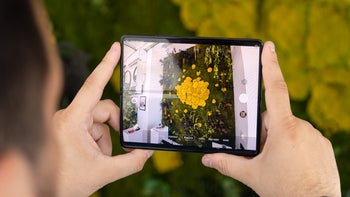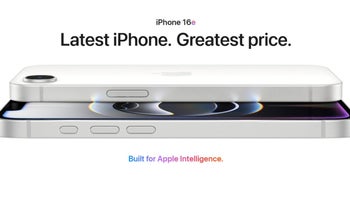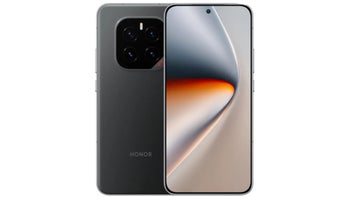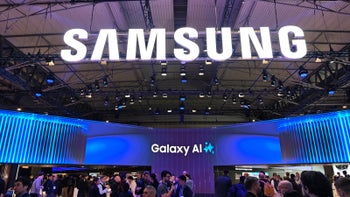The iPhone 14 and Galaxy Z Fold 4 to have a novel Samsung tech in common
We may earn a commission if you make a purchase from the links on this page.

Samsung is preparing to launch two OLED display innovations for its and Apple's products, and the first one will be available in retail devices as soon as this year. Currently, the Galaxy S22 Ultra display uses the old M11 OLED material generation that is in the S21 Ultra's screen.

Its brightness potential, however, has been exploited to the max by Samsung to reach those sky-high S22 Ultra display specs like a record peak display brightness of 1750 nits, while its controller allows for the most granular 1Hz-120Hz refresh rate dynamics for the first time on a Samsung phone.
It seems that Samsung's newest, M12 OLED display material generation, is being kept for phones that will arrive in the second half of the year. The Elec is reporting that the foldable Galaxy Z Fold 4 and Z Flip 4 are expected to be the first Samsung phones that will have displays with the new material, while the iPhone 14 series will have the first Apple phones with it.
Wait, what? Yes, the iPhone 14 (most likely its Pro models) will have a newer Samsung OLED display generation than Samsung's own Galaxy S22 Ultra flagship. We still don't know that will the M12 material generational improvements be compared to the M11 in the S22 Ultra, so Samsung fans who got the Ultra shouldn't get all riled up prematurely.
Long-life dual-stack OLEDs on tap for Samsung and Apple devices
The other OLED innovation that Samsung will be endeavoring on in the near future is developing two-stack panels like the ones LG is using now for integration into electric and other vehicles. The two-stack method allows OLED displays to last much longer without visual degradation, especially when it comes to the fragile blue organic diodes. That's important for cars which may be in service for a decade or more, but also for electronics with longer shelf life than phones, like laptops or tablets.
Samsung was supposed to developed a 10.86" OLED display to be used in an iPad next year, but Apple didn't like the results with the single-stack OLED panel that Samsung suggested, so that partnership fell through. LG, on the other hand, which has already mastered the dual-stack OLED method, is expected to supply such screens for a 12.9-inch and a 11.0-inch OLED iPad that are to be released in 2024.
Apple is also said to move its Mac and iMac display lines to OLED, not just the iPads, and those have longer life cycle than he typical iPhone, so it wants dual-stack OLEDs for them, too. This is what may have prompted Samsung to speed up the development of its own dual-stack OLED displays - the T series - called that to evoke the word tandem when it comes to the two OLED layers working in synchronicity. In other words, Samsung is sensing the danger of being overrun by LG as the main Apple OLED display supplier for anything other than iPhones, and is reacting accordingly.
The single-stack OLED variety currently used in phones has just one layer of red, green and blue organic light-emitting diodes which shortens the diodes lifespan before burn in fourfold compared to the two-stack solution that LG uses in, say, its OLED screens installed in cars and, soon, in iPads.

Both Samsung and LG, however, are now working on mid-size dual-stack OLED displays for future tablets and laptops, says the report. Samsung, however, will likely release dual-stack T-series OLED displays in its own Tab S and Galaxy Book families of tablets and laptops first about a year before Apple uses such panels.
This means we may witness the Tab S9 and 2023 Galaxy Book models to be the first with OLED displays with increased lifespan next year, so that Samsung tests the mass production of the T-series panels first on its own products as both a competitive advantage and a trial run.










Things that are NOT allowed: